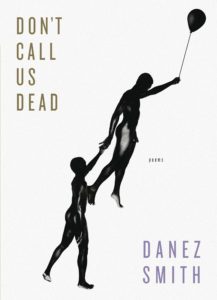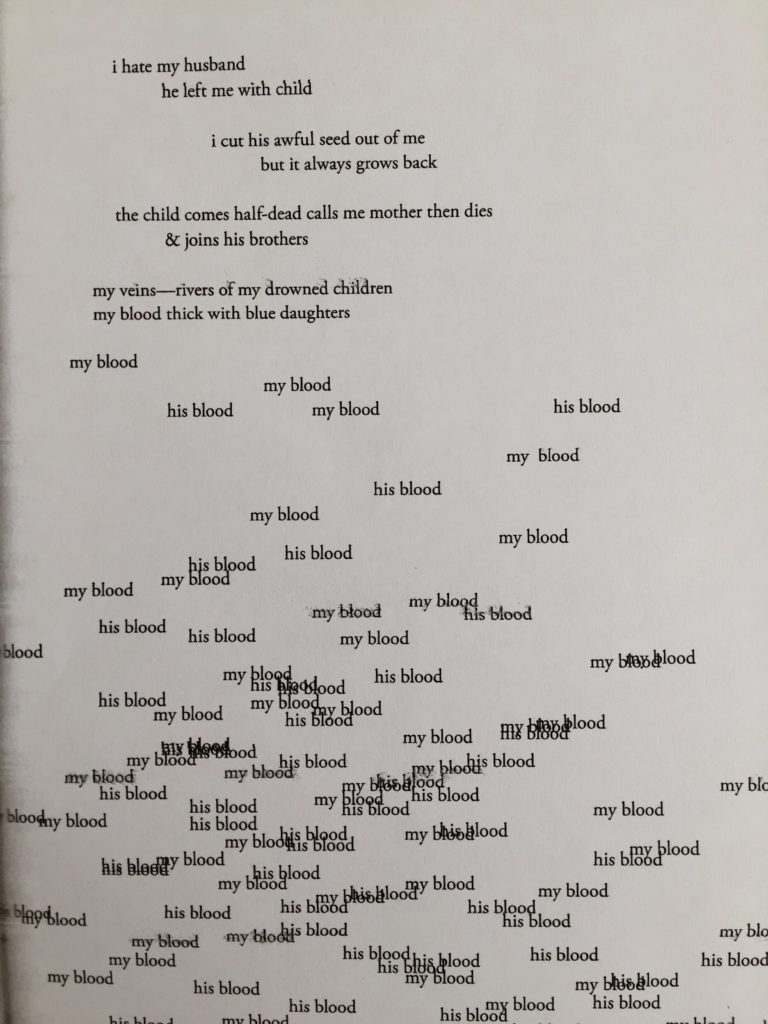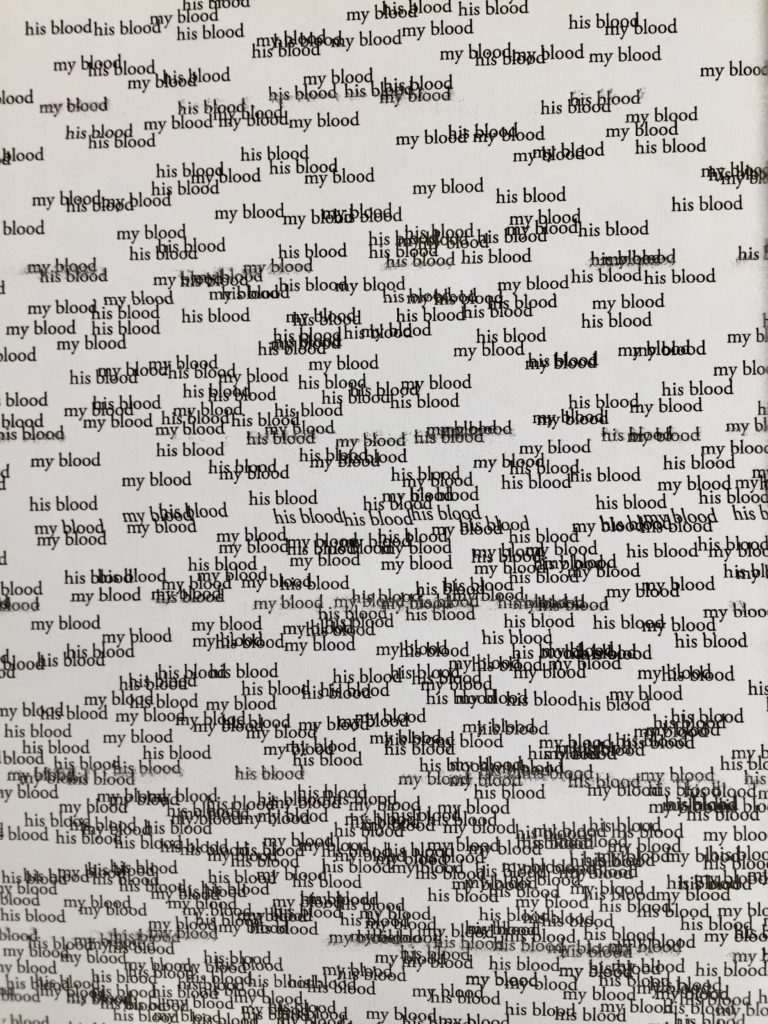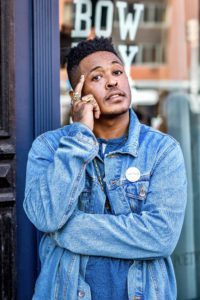
For the boys of Danez Smith’s National Book Award-finalist collection, Don’t Call Us Dead,
_____every year, days get longer.
time clogged with boys. the boysO the boys. they still come
in droves. the old worldkeeps choking them. our new one
keeps spitting them out.
Accepting early death as a foregone conclusion is the obsession of the stunning, long narrative sequence, “summer, somewhere,” that imagines an afterlife for the victims of violence and opens the book. The sequence also presents the urgent central question of Smith’s book: who is safe in their own bodies when their bodies are black or queer?
how old am i? today, i’m today.
i’m as old as whatever light touches me.some nights i’m new as the fire at my feet
some nights i’m a star, glamorous, ancient& already extinguished. we citizens
of an unpopular heaven& low-attended crucifixions. listen
i’ve accepted what i was givenbe it my name or be it my ender’s verdict.
when i was born, i was born a bull’s-eye.i spent my life arguing how i mattered
until it didn’t matter.who knew my haven
would be my coffin?dead is the safest i’ve ever been.
i’ve never been so alive.
That safety is unattainable for these boys is at the core of this sequence of poems. Not only does the lack of capitalization suggest the smallness of the speaker in the context of this book, these poems, and the circumstances of life and death, but there is a fraught tension in the couplets, in the enjambment, in the spare use of punctuation, and in the music of each short line that propels us through the experience of peril. We are shown image after image of a violent world where boys lives have been taken away, and their dream paradise is an afterlife, where “everything / is sanctuary & nothing is a gun.”
Though “summer, somewhere” is about the afterlife, the rest of Don’t Call Us Dead is about life and death on earth. Again, the central figure is the body: the black body, the queer body, the safe body, the sick body, the dead body. These poems show us that there are things other than violence that kill. To be black and queer, for example, is to have a double bullseye on one’s back. In “it won’t be a bullet,” the speaker is “not the kind of black man who dies on the news,” but “the kind who grows thinner & thinner & thinner / until light outweighs” him. Smith uses statistics from the Centers for Disease Control in “1 in 2” to describe just how high the odds are stacked against gay black men: So often, HIV kills these men when bullets do not.
What is so extraordinary about this collection is its lyricism, its humanity, and its urgency. People are dying. Second by second. Fast and slow. The lyric experience of these poems lets us live that peril for a moment. And yet, we are still confronted by the fact that, while Smith’s poems rebuke and lament and try to find peace, no one is listening. There are unacknowledged national epidemics brought to attention, on many levels, throughout this collection. HIV is downplayed as a threat to human life in public now, in a way that it wasn’t in the 1980s and 1990s. Black lives are lost everyday to racially motivated violence in communities all over America and the collective population of the US cannot agree that it’s a systemic problem that needs a solution. The epidemic of gun violence has shown itself again in the wake of the mass shooting in Las Vegas. In “you’re dead, america,” Smith speaks to how these epidemics result in the loss of faith, country, and personhood:
i’ve lost my faith in this garden
the bees are dying
the water poisons whole cities
but my honeyed kin
those brown folks who make
up the nation of my heart
only allegiance i stand for
realer than any god
for them i bury whatever
this country thought it was
In characteristic style, the lower case “a” in “america” denotes desertion and disappointment. The “i” in the poems is similarly small and slight. Powerless. As if what is written is already written. As if there is no changing the future, any more than history can be changed.
The formal inventiveness of this collection is bold and brilliant. In “litany with blood all over,” Smith creates a visual representation of chaos on the page. The poem begins,
i am telling you something __________i got blood on the brain
and continues down the page more or less in loose couplets for most of two pages. But then the words, the letters, the boys, the bodies, the blood, begin to blur. The page is used to confront the reader as a visual assault on the senses as lines dissolve into an explosion and collision of the word blood.
Notice how, in this form, the word blood becomes the literal and figurative climax of “litany.” It is also somewhat hypnotic, the eye not knowing where or how to sort and re-sort this information, but finding blood everywhere.
In another inventive use of form, in the poem “O nigga O,” Smith uses the question and answer form of a multiple-choice exam. The answer is upside down at the bottom of the page, forcing the reader to interact with the page after realizing that the answer doesn’t exist in the list we’ve been given.
The brave nature of these poems is not only in calling out a country for its lack of empathy, but also in the very visceral way that sex, disease, and death are used to confront the reader. In Don’t Call Us Dead, sex is a potentially life-threatening act. But it’s also a deeply human act, undertaken despite its risks, and not carelessly, but in the desire to connect with someone and to be loved. Pain and fear are a byproduct of this attempt at love: “instead of getting tested / you take a blade to your palm / hold your ear to the wound.” In “crown,” Smith brilliantly uses the constraints of a crown of sonnets to argue that the speaker’s dying cells have become the speaker’s children. The speaker resolves to take care of them well, now that there is no choice but to own them. The disease becomes a “child,” a leftover part of the gone lover that the speaker cannot be rid of.
One of my favorite moments of the book is the lilting poem, “not an elegy.” Its quiet refusal to eulogize returns some power to the speaker, and at this point the book turns toward a reconciliation of sorts. People have been lost to violence, “the cop will walk free,” but there is “no more / room for grief” if the speaker wants to live:
have i spent too much time worrying
about boys killing each other & being killedthat i forgot the ones who do it
with their own hands?
Because people can be self-destructive without intending to be, this question haunts the speaker throughout the collection. In fact, Don’t Call Us Dead is full of unanswerable questions that the reader is forced to consider:
_________________________he saw something
what? the world? a road?
trees? a pair of ivory hands?
______his reflection?
his son’s?
_____a river saying his name?
Don’t Call Us Dead is an historical commentary, a scientific document, a personal narrative, and a formal poetics. In this, Smith’s approach is aligned with other important books of our historical moment, including Patricia Smith’s Incendiary Art, Solmaz Sharif’s Look, and Claudia Rankine’s Citizen.
Don’t Call Us Dead. That’s an order. Smith uses every tool of craft at a poet’s disposal to deliver powerful, urgent, deliberate, crucial poems. Don’t miss this book.
***
Photograph of author © David Hong.







